SFS Suomen Standardit
Tätä standardia sovelletaan tilanteissa, joissa on tarkoituksena kerryttää metsiin seurantakauden aikana kumulatiivista nettohiilensidontaa ja tuottaa ilmastoyksiköitä. Tässä standardissa määritellään metsien hiilinieluihin perustuvan ilmastoyksiköiden tuottamisen periaatteet ja vaatimukset tavalla, joka on yhteensopiva standardien SFS-EN ISO 14064-2 ja SFS-EN ISO 14064-3 kanssa täydentäen niitä mahdollistamalla aluekohtaisen hiilinielujen seurannan ja jatkuvaluonteisen toiminnan projektikohtaisen toiminnan lisäksi.
Standardia sovelletaan hanke- ja metsäaluekohtaisen vuotuisen nettohiilensidonnan laskentaan, seurantaan, raportointiin ja ilmastoyksiköiden määrittämiseen ja seurantaan. Standardia noudattamalla pystytään osoittamaan, sitoutuuko hiiltä metsäalueeseen enemmän kuin mitä niistä vapautuu ja kuinka paljon toiminnasta aiheutuu päästöjä, verrattuna perusuran mukaiseen toimintaan. (jatkuu)
* SFS:n tehtävänä on ylläpitää suomalaista SFS-standardikokoelmaa. Maailmanlaajuisten standardien kohdalla ISO vahvistaa standardin ensin, ja Suomi päättää sen jälkeen, vahvistaako se standardin vai ei. Vahvistamispäätökseen vaikuttaa alan suomalainen näkemys ja kiinnostus vahvistettavaan standardiin.
